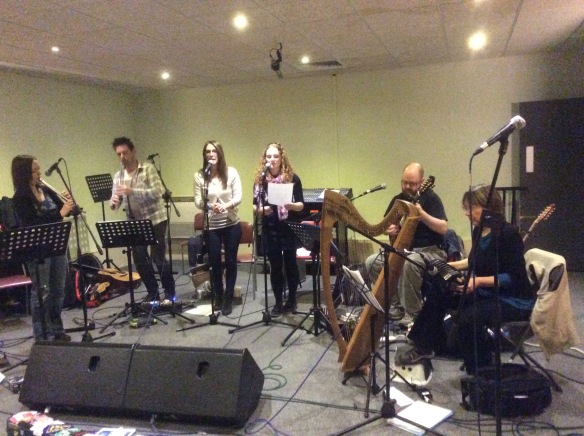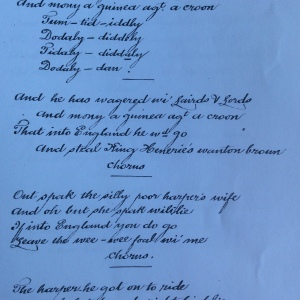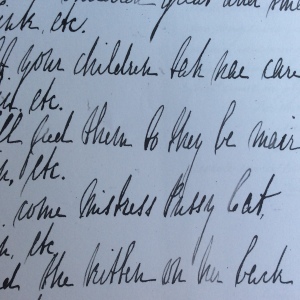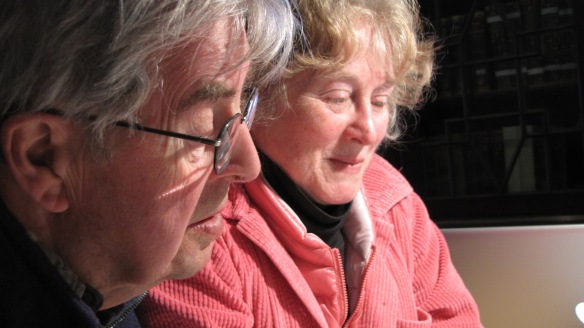 We are very familiar with MSS material, from our own personal and shared researches, and were delighted to be asked to act as consultants to this worthy project. Alison’s family roots and associations with the Dumfries and Galloway area gives her an added interest in this venture.
We are very familiar with MSS material, from our own personal and shared researches, and were delighted to be asked to act as consultants to this worthy project. Alison’s family roots and associations with the Dumfries and Galloway area gives her an added interest in this venture.
 The Macmath collection includes printed material from chapbooks and broadsides but is predominantly in MSS form. The first general point to make is that songs, be they in print or MSS, are essentially in shackles and can only be set free when sung! In 1810 Margaret Laidlaw, mother of James Hogg reproached Sir Walter Scott who had printed some of her songs in his published Minstrelsy of the Scottish Border. ‘ There were nane o’ my songs prentit til ye prentit them yourself and ye hae spoilt them a’ thegither. They were made for singin’ and no for readin’ but ye hae broken the charm noo and they will never be sang mair’. Fortunately Margaret’s gloomy prediction was proved wrong. On a similar theme, Edwin Muir in his ‘Complaint of the Dying Peasantry’ ( Collected Poems, Oxford 1965) and we quote from the last verse ‘The singing and harping fled Into the silent library But we are with Helen dead And with Sir Patrick lost at sea.’
The Macmath collection includes printed material from chapbooks and broadsides but is predominantly in MSS form. The first general point to make is that songs, be they in print or MSS, are essentially in shackles and can only be set free when sung! In 1810 Margaret Laidlaw, mother of James Hogg reproached Sir Walter Scott who had printed some of her songs in his published Minstrelsy of the Scottish Border. ‘ There were nane o’ my songs prentit til ye prentit them yourself and ye hae spoilt them a’ thegither. They were made for singin’ and no for readin’ but ye hae broken the charm noo and they will never be sang mair’. Fortunately Margaret’s gloomy prediction was proved wrong. On a similar theme, Edwin Muir in his ‘Complaint of the Dying Peasantry’ ( Collected Poems, Oxford 1965) and we quote from the last verse ‘The singing and harping fled Into the silent library But we are with Helen dead And with Sir Patrick lost at sea.’
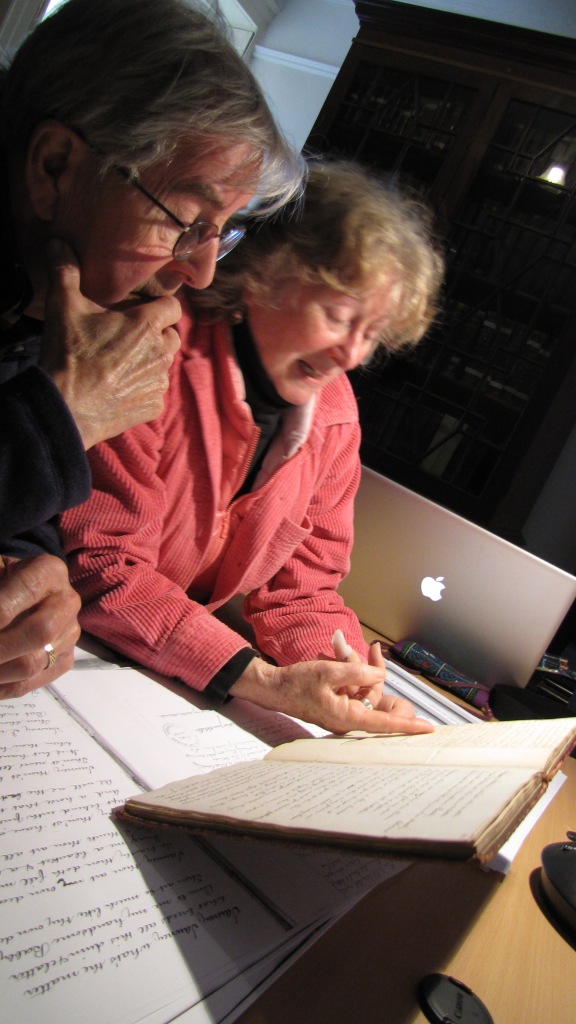 There has been a fruitful inter-action between the oral and printed tradition. However we believe that the oral nature within the Macmath Collection is its artistic strength and dynamic. This is indeed a quality collection which ranges from classic ballads such as Hynd Horn and Sir Patrick Spens to the light hearted The Wedding of the Frogge and the Mouse and children’s songs. The Queen of the Fairies is an excellent and distinctive version of Tam Lin, and Queen Jeannie was in Labour are just some of the many items awaiting liberation. In most cases there are no tunes given and one of our tasks was in marrying airs from our own repertoire or knowledge and in suggesting possibilities for performance. It was interesting to build up a picture of the area where Macmath had collected songs and from whom. His four sisters featured and especially his mother’s sister Jane Webster. The process we undertook in reading the handwritten texts of this professional copyist, giving our comments and melodies for items throughout, was recorded and filmed for immediate and future reference. The English and Scottish Popular Ballads edited by Francis James Child (5 vols Dover New York 2003) and the Traditional Tunes of the Child Ballads edited by Bertrand Bronson (4vol s reprint 2009 Loomis Press) proved to be both fitting and invaluable.
There has been a fruitful inter-action between the oral and printed tradition. However we believe that the oral nature within the Macmath Collection is its artistic strength and dynamic. This is indeed a quality collection which ranges from classic ballads such as Hynd Horn and Sir Patrick Spens to the light hearted The Wedding of the Frogge and the Mouse and children’s songs. The Queen of the Fairies is an excellent and distinctive version of Tam Lin, and Queen Jeannie was in Labour are just some of the many items awaiting liberation. In most cases there are no tunes given and one of our tasks was in marrying airs from our own repertoire or knowledge and in suggesting possibilities for performance. It was interesting to build up a picture of the area where Macmath had collected songs and from whom. His four sisters featured and especially his mother’s sister Jane Webster. The process we undertook in reading the handwritten texts of this professional copyist, giving our comments and melodies for items throughout, was recorded and filmed for immediate and future reference. The English and Scottish Popular Ballads edited by Francis James Child (5 vols Dover New York 2003) and the Traditional Tunes of the Child Ballads edited by Bertrand Bronson (4vol s reprint 2009 Loomis Press) proved to be both fitting and invaluable.
 Alison Burns has assembled a talented group of singers and musicians to bring the songs back to the living oral tradition via public performance and compact disc where they belong. We are sure William Macmath would have approved!
Alison Burns has assembled a talented group of singers and musicians to bring the songs back to the living oral tradition via public performance and compact disc where they belong. We are sure William Macmath would have approved!
May 2015 A McM and G McI


